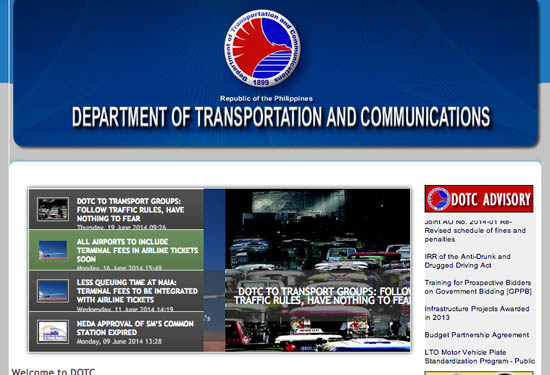Help monitor compliance with campaign rules #juanvote
Voter vigilance is the key to clean and fair campaigns, right? Read on to do your share.
On twitter, COMELEC Spokesperson James Jimenez called out to social media to help monitor compliance with campaign rules.
1. bawal na mga poster at propaganda ng mga kandidato sa mga sasakyang pampubliko, katulad ng bus, taxi, at jeep.
2. bawal na ang mga poster na nakalambitin sa mga linya ng kuryente. #votervigilance ireport gamit ang #SumbongKo
3. bawal na ang mga mukha at pangalan ng mga politiko sa mga government vehicles. Ireport gamit ang #SumbongKo #votervigilance
4. bawal na mag-hosting ng regular na programa sa tv at radyo.
5. posters, streamers, tarps will have to be taken down by the politicians at their expense.
Jimenez also added that “ang paglabag ng campaign rules ay ELECTION OFFENSE. kulong, fine, at pagma-diskwalipika ang parusa.”
Ready to report violations of campaign rules?
1. Tweet your reports to @comelectv, use #SumbongKo. Email? isumbongsacomelec at gmail dot com.
2. If you’re on facebook, tag /pcosdemo for your #sumbong! #SumbongKo #votervigilance #iwillvote
What are the violations?
A primer on Comelec Resolution 9615 shows some of the salient points of regulating online campaign activities.
James Jimenez in his column at the Business Mirror adds that “the violations aren’t very difficult to spot either. Here’s a short list of violations that ordinary citizens can easily detect and report”.
·
– Campaigning on Maundy Thursday, March 28.
– Campaigning on Good Friday, March 29.
– Campaigning on the eve of Election Day, May 12.
– Campaigning on Election Day, May 13.
– Printed materials such as leaflets that are larger than legal-sized bond paper, i.e., 8 ½ inches in width and 14 inches in length.
– Posters made of cloth, paper, cardboard or any other material, whether framed or posted, measuring more than 2 feet by 3 feet.
– The use of hazardous materials in campaign materials and the use of plastics in cities and municipalities where plastics are banned.
– The absence of the words “political advertisement paid for,” followed by the true and correct name and address of the candidate or party for whose benefit the election propaganda was printed or aired; and “political advertisements paid by,” followed by the true and correct name and address of the payor.
– The showing, display or exhibition in a theater, television station, or any public forum any movie, cinematography or documentary portraying the life or biography of a candidate, or in which a character is portrayed by an actor or media personality who is himself a candidate.
– The posting, display or exhibition of any election campaign or propaganda material outside of authorized common poster areas, in public places, or in private property without the owner’s consent.
It is important to note that “public places” include any of the following: electronic announcement boards, such as LED display boards located along highways and streets, LCD TV displays posted on walls of public buildings, and other similar devices which are owned by local government units, government-owned and -controlled corporations, or any agency or instrumentality of the government; motor vehicles used as patrol cars, ambulances, and other similar purposes that are owned by local government units, government-owned and -controlled corporations, and other agencies and instrumentalities of the government, particularly those bearing red license plates; waiting sheds, sidewalks, street and lampposts, electric posts and wires, traffic signages and other signboards erected on public property, pedestrian overpasses and underpasses, flyovers and underpasses, bridges, main thoroughfares, center islands of roads and highways; schools, shrines, barangay halls, health centers, public structures and buildings or any edifice thereof; public utility vehicles such as buses, jeepneys, trains, taxi cabs, ferries, pedicabs and tricycles, whether motorized or not; and within the premises of public transport terminals, such as bus terminals, airports, seaports, docks, piers, train stations and the like.
The public can report any of these violations through any of the following means: by landline telephone, through 527-5574, 525-9345 and 525-9302; and, of course, online. On the Internet, the public can send e-mails to [email protected], send a tweet to @comelectv, or post a comment on http://facebook.com/pcosdemo. They can also fill out the feedback/incident report form they will find on http://mycomelec.tv. For those who know how to use hashtags on Twitter, adding #SumbongKo to tweets will facilitate the tracking of feedback or incident reports.
Incidentally, did you know that the Comelec chairman himself is on Twitter? Follow him via @ChairBrillantes.
Here are the Comelec documents to help you with the monitoring:
Here is an infographic on campaign rules from GMA.
Source: gmanetwork.com via Noemi on Pinterest
Download the List of Common Poster Areas for NCR by
These are the common poster areas in Metro Manila
COMELEC Resolution 9615, the implementing rules and regulations for Republic Act 9006 by


